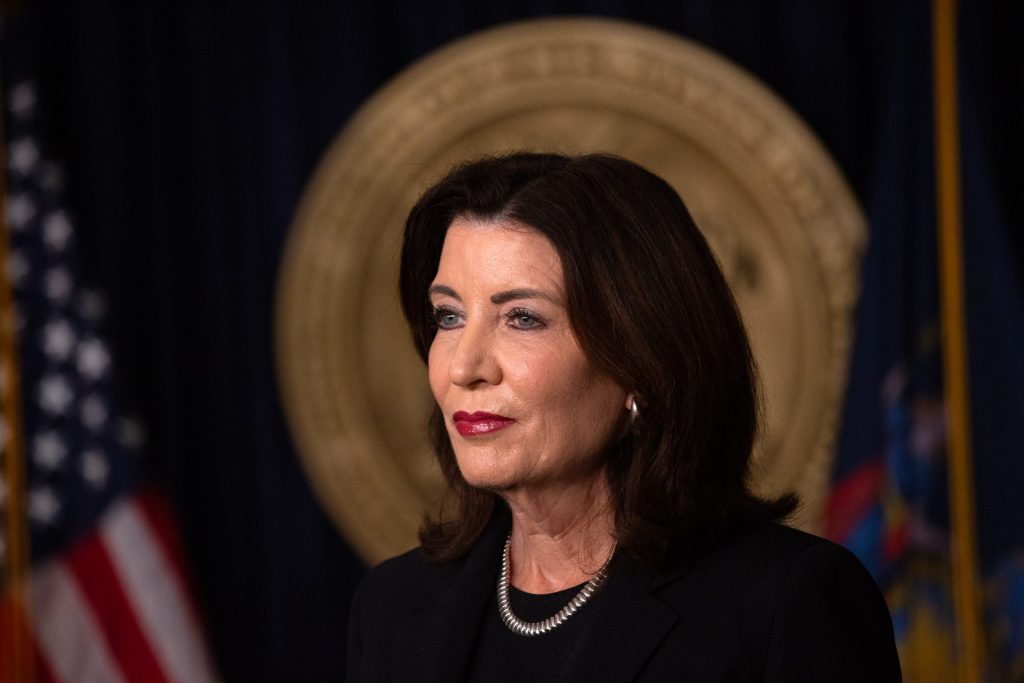The state budget approved by legislators last week gives $350 million in additional funding to help New York City continue providing child care vouchers to low-income families — if the city throws in the same amount of its own money.
There’s another major caveat buried in the fine print: The state is raising the minimum amount that New York City must spend on the program to $328 million a year. Even if the city doesn’t want to pay to get the matching funds, the new requirement could force it to.
Right now, New York City contributes just under $53 million to the Child Care Assistance Program, which is largely funded by the federal and state governments and covers almost the entire cost of child care for low-income families. That means the state is mandating the city increase its spending more than sixfold.
When asked what would happen if New York City doesn’t meet the new minimum, Division of Budget spokesperson Tim Ruffinen simply said, “They’re statutorily required to.”
The budget does not include such a change for any of the state’s 57 other local social service districts, which administer the child care subsidies.
New York City warned earlier this year that — absent more state money — it would have to start removing thousands of parents a month from the Child Care Assistance Program due to an impending funding shortfall. Governor Kathy Hochul and the city have since been in a monthslong standoff over who should pay.
The vouchers provide a lifeline for working parents in New York City who would otherwise face annual child care costs averaging more than $20,000, among the highest in the country.
Earlier last week, Deputy Mayor Randy Mastro announced the city was pausing enrollment and setting up a waitlist. Meanwhile, more than a dozen counties around the state, facing their own funding shortfalls, have also set up waitlists.
New York City’s shortfall has several causes. The state expanded eligibility for the vouchers in recent years, boosting enrollment. On top of that, the state adjusted the market rate for provider pay, which increased city spending on the program by 20 percent. And the city expected that more parents were soon going to need the vouchers, because the city was going to resume enforcing work requirements for public assistance recipients, which had been paused during the pandemic.
After Hochul’s January executive budget did not include any new funding, 49 state legislators from the city, all but two members of the New York City Council, and many advocates asked Albany for more money. They said the city needed about $900 million to ensure that parents did not lose assistance and that new applicants would not be turned away.
The Children’s Agenda, a Rochester-based advocacy organization, estimated that non-NYC districts needed an additional $213 million to ensure they could keep providing vouchers to eligible parents.
The final budget agreement meets neither demand. The program will see an additional $400 million overall, with $350 million for New York City and $50 million for the rest of the state.
“This is good news compared to the situation we were in in February,” said Dede Hill, policy director at Schuyler Center for Analysis and Advocacy, a social policy and advocacy organization.
The money for New York City comes with strings. In order to access the full amount, the city must contribute an equal sum. Any funds it doesn’t match will become available to other counties, also on a matching basis. The $50 million set aside for the rest of the state does not have the matching requirement.
But even more may be at risk. Local social service districts are required to put “maintenance of effort” funds into the Child Care Assistance Program. That amount was set by a formula from the mid-1990s. This year, the budget requires New York City to increase its contribution to $328 million.
Albany is “requiring the city to spend an enormous amount more on child care than they currently do,” said Pete Nabozny, policy director at the Children’s Agenda, a Rochester-based advocacy organization. “They haven’t done this since the ‘maintenance of effort’ levels were established in the 1990s.”
It is not clear what will happen if New York does not meet the minimum requirement, Nabozny said. Matching the state’s $350 million for additional funds would also fulfill its maintenance of effort obligation, but Mayor Eric Adams’s own budget proposal this month did not include any new money for the program. The city has not yet indicated whether that will change in response to the finalized state plan.
Adams has argued that the state should cover the full cost of the funding shortfall. He and other local leaders see it as largely a state program: The state sets most of the rules for the Child Care Assistance Program, and has covered the cost of its expansion in recent years.
New York City Council Member Lincoln Restler, who has been vocally advocating for more funding, called the final agreement an “enormous victory for working families.”
“The state has done its part, and now it’s on Mayor Eric Adams to ensure that thousands of parents do not lose” their vouchers, he said.
Adams’s office declined to comment; Hochul’s office did not respond by publication time.
Our nonprofit newsroom relies on donations from readers to sustain our local reporting and keep it free for all New Yorkers. Donate to THE CITY today.
The post The State Is Making New York City Spend $275 Million More for Child Care Vouchers appeared first on THE CITY – NYC News.

